- News
- Reviews
- Bikes
- Accessories
- Accessories - misc
- Computer mounts
- Bags
- Bar ends
- Bike bags & cases
- Bottle cages
- Bottles
- Cameras
- Car racks
- Child seats
- Computers
- Glasses
- GPS units
- Helmets
- Lights - front
- Lights - rear
- Lights - sets
- Locks
- Mirrors
- Mudguards
- Racks
- Pumps & CO2 inflators
- Puncture kits
- Reflectives
- Smart watches
- Stands and racks
- Trailers
- Clothing
- Components
- Bar tape & grips
- Bottom brackets
- Brake & gear cables
- Brake & STI levers
- Brake pads & spares
- Brakes
- Cassettes & freewheels
- Chains
- Chainsets & chainrings
- Derailleurs - front
- Derailleurs - rear
- Forks
- Gear levers & shifters
- Groupsets
- Handlebars & extensions
- Headsets
- Hubs
- Inner tubes
- Pedals
- Quick releases & skewers
- Saddles
- Seatposts
- Stems
- Wheels
- Tyres
- Health, fitness and nutrition
- Tools and workshop
- Miscellaneous
- Tubeless valves
- Buyers Guides
- Features
- Forum
- Recommends
- Podcast
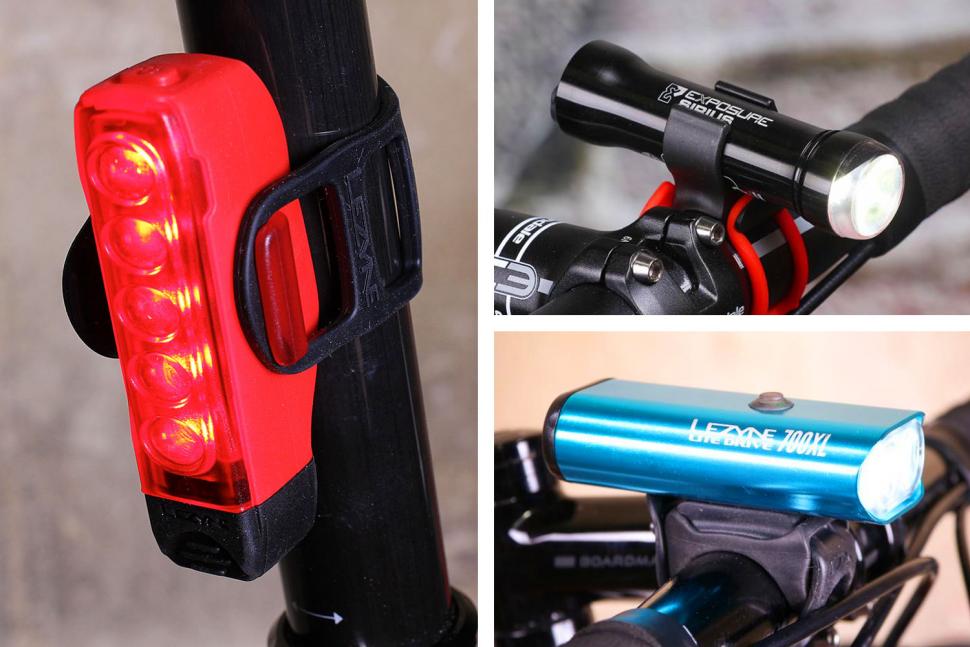 Should cyclists use daytime running lights Sept 2018
Should cyclists use daytime running lights Sept 2018Should cyclists use daytime running lights? Plus the best front and rear daytime cycling lights
You need front and rear lights for cycling in the dark, but do you also need to use lights in the daytime? We look at the argument for using lights during the daytime and round up a bunch of front and rear lights to consider if you do want to increase your visibility.
The best daytime running lights
- Lezyne Strip Drive Front — £29.49
- Magicshine Seemee 30 Combo — £24.99
- Giant Recon TL 200 rear light — £29.04
- Exposure Link Daybright — £55.96
- Blackburn DayBlazer 1100 — £55.99
- See.Sense Icon 2 rear light — £79.99
- Exposure Lights TraceR DayBright — £39.60
- Exposure Lights Sirius DayBright — £75
- Lezyne Strip Drive Pro 300 rear light — £52
- Lezyne Lite Drive 1000XL — £59.49
- Specialized Flux 900 Headlight — £69.99
- Bontrager Flare R City — £24
- Moon Comet-X front bike light — £15.75
It may not have escaped your attention that all new cars sold in the UK legally have to have daytime front lights. So should cyclists also be looking to boost their visibility when cycling in the daytime with front and rear lights? In a recent survey of 500 road.cc readers on Twitter, 52% said they do want daytime lights. It perhaps wasn't the result we were expecting.
Read more: The best front lights for cycling — beam comparison plus how-to-choose guide
To meet this demand, there are a growing number of bike brands marketing lights with daytime running modes, but what does this actually mean and are they any different to lights designed for nighttime cycling?
Exposure Lights has added a new Day Bright mode to its front and rear lights this winter. And it is more than just a flashing mode says Exposure’s Mark Swift. “The DayBright pulse pattern is the most noticeable to ensure it is recognised at distance on rural roads and also enable the light to cut through the noise of the urban town or city traffic and road distractions within daylight hours," he says.
“As the pulse pattern is not regular, once seen DayBright stays highlighted by the brain's receivers and ensures the cyclist is noticed,” adds Mark.
Why would a cyclist want to use lights during the daytime? Surely there’s no need when it’s light?
“Why not!” says Specialized’s William Watt. “Beyond smart responsible riding, visibility on the road is quite simply the most important investment a rider can make in their safety, particularly in a congested urban environment where every road user has a multitude of distractions. Daytime lights give the rider that extra layer of visibility on the road, particularly for that notorious black spot on the near side of traffic.”
It's not always bright and sunny during a typical UK winter day though. It’s often murky, drab and almost dark. Daytime lights can be used in these conditions says Exposure's Mark to help make cyclists stand out in changing light conditions and when “cycling in cities between building or country road in and out of tree cover where the sun cuts through the gaps but is then eclipsed by an obstacle the drivers eyes can sometimes not adjust fast enough. DayBright ensures the cyclist is spotted.”
It’s a stance that is backed up by See.Sense, a company that launched an intelligent daylight back in 2013 and every light since has had a daytime focus. “Daylight visibility has been really important to us right from the start,” the company tells road.cc. “When you consider that 80% of cycling accidents happen during the day, attracting attention to other road users as early as possible during these times is really quite crucial. Think about modern cars, they have their lights running almost any time you see them on the road. Why shouldn't it be the same, if not even more important for cyclists?”
That 80% figure that See.Sense refers to is based on evidence compiled by ROAP and you can read more facts and figures about the number of cyclists injured or killed in accidents here.
The argument for using daytime lights is starting to gather pace, but has anyone actually carried out a detailed survey to assess the impact of cyclists running daytime lights? Handily, just such a survey exists. It was conducted in Denmark in 2004/05 with 3,845 cyclists and concluded that those cyclists with permanent running lights recorded a 19% lower incident rate than a control group not using lights.
“The study shows that use of permanent bicycle running lights reduces the occurrence of multiparty accidents involving cyclists significantly,” the controlled experiment concluded. You can read that paper here.
So should we all start using daytime lights then? See.Sense recommends using flashing lights to help attract attention sooner. “When you have lights that flash brightly from both front and rear can help alert drivers sooner than a solid light, reducing risks out on the road,” the company tell us.
13 front and rear daytime lights
If you’re interested in daytime lights, here are a selection currently available in bike shops. There are loads more lights to consider in this buyers guide and don’t forget the beam comparison engine if you’re shopping for lights as well.
Lezyne Strip Drive Front — £29.49
The Lezyne Strip Drive 400 has been updated with a bright and really eye-catching day time flash, commendable battery life and faster charging. As with the old model, it's also fairly light, easy to operate, has loads of functions and is waterproof too. It's more of a be-seen rather than seeing light, though.
Read our review of the Lezyne Strip Drive Front
Magicshine Seemee 30 Combo — £24.99
The Magicshine Seemee 30 Combo is a set of 30 lumen LED lights aiming to get you seen. The slim profile means they easily attach to seat posts, seat stays, forks or handlebars, and features such as infrared ambient light sensors are rarely found at this price. They're easy to use, stuffed with useful features and very visible around town.
Read our review of the Magicshine Seemee 30 Combo
Giant Recon TL 200 rear light — £29.04
Giant's Recon TL 200 is an excellent rear light, offering lots of brightness, useful modes and decent run-times.
The Recon TL 200 is a bigger and brighter version of the TL 100. Which you choose comes down to personal preference, but for the extra tenner the 200 gets our vote for the extra brightness and run-time it offers.
Read our review of the Giant Recon TL 200
Exposure Link Daybright — £55.96
The Exposure Link Daybright is a secondary helmet light that adds 360-degree visibility and is great for being seen in heavy traffic. Designed and made in the UK, build quality is exceptional, it's very tough and run-times are reasonable bearing in mind its size and two LEDs.
Read our review of the Exposure Link Daybright
Blackburn DayBlazer 1100 — £55.99
The Blackburn Dayblazer 1100 front light is the biggest of the Dayblazer family. It's a beautifully made, five-function, compact torch type, capable of producing – surprise, surprise – 1100 lumens in its brightest setting, great for blasting along backroads, but with lower settings, pulsing and strobing for more built-up areas and for daylight running.
Read our review of the Blackburn DayBlazer 1100
See.Sense Icon 2 rear light — £79.99
The See.Sense was arguably the first smart light that used sensors to alter the brightness and speed of flash to suit different lighting conditions, as well as being able to detect car headlights. The light was so well received that it won the road.cc People’s Choice award in 2015 and they’ve since followed up with the 300 lumen Icon 2. You can read the review here.
Exposure Lights TraceR DayBright — £39.60
The TraceR is Exposure’s smallest and most affordable rear light with its new Day Bright mode. It has a 75-lumen rating with a three to 24 hour run time, weighs just 35g and has three brightness levels. Side visibility has been considered in the design of the light as well.
Exposure Lights Sirius DayBright — £75
If you want a bright and lightweight front light for commuting then the Sirius is a good option, with 575 lumens bright enough for most riding situations and a choice of seven modes, including the new DayBright. It’s easy to use and mount to the handlebars, with a tactile power button and battery gauge LED.
Lezyne Strip Drive Pro 300 rear light — £52
Lezyne has been producing lights with daytime visibility in mind for the past five years, intended to be brighter with unique flash patterns to be more visible to other road users up to 1 mile away. It offers 15 lights with a daytime flash mode, here are two contenders.
The Strip Drive 300 rear light, with its 300-lumen output, is one of the brightest lights on the market right now but there are 11 modes to choose from to suit all riding conditions. It packs a 100-lumen punch in the daytime mode, definitely ensuring you’ll boost your visibility.
Read our review of the Lezyne Strip Drive Pro 300
Lezyne Lite Drive 1000XL — £59.49
For front daytime lights, Lezyne offers the Lite Drive 1000XL. The small unit comprises two LEDs pumping out 1,000 lumens with a high-visibility daytime flash mode.
Read our review of the Lezyne Lite Drive 1000XL
Specialized Flux 900 Headlight — £69.99
Not to be left out, Specialized has developed the Flux 900 front light with two different LEDs with dedicated optics to provide the ideal beam pattern, and it also offers a daytime flash mode which reduces the lumen count to 300.
Bontrager Flare R City — £24
Bontrager was an early proponent of daytime lights and this Flare R City light is its smallest rear light. Despite its diminutive proportions, the light packs out 35 lumens from a single LED and offers up to five hours in the dedicated daytime flash mode.
Read our review of the Bontrager Flare R City
Bontrager has even had some of the Trek Factory Racer pros using daytime rear lights during the 2015 Tour de France prologue stage, but that marketing stunt aside we’ve not seen the lights in use since.
Moon Comet-X front bike light — £15.75
Moon offers two lights with a dedicated daytime flash mode, using a slow pulse that is designed to boost visibility as well as maximising battery runtime, with a claimed 23 hours in this mode. It’s small and light and at 120 lumens in the daytime mode plenty bright enough. There’s also a matching rear light
Read our review of the Moon Comet-X light
So daytime lights then, will you be investing or is the cynic in you thinking that the bike industry is just trying to sell more lights? Let us know in the comments section below.
Explore the complete archives of reviews of front lights and rear lights on road.cc
David worked on the road.cc tech team from 2012-2020. Previously he was editor of Bikemagic.com and before that staff writer at RCUK. He's a seasoned cyclist of all disciplines, from road to mountain biking, touring to cyclo-cross, he only wishes he had time to ride them all. He's mildly competitive, though he'll never admit it, and is a frequent road racer but is too lazy to do really well. He currently resides in the Cotswolds, and you can now find him over on his own YouTube channel David Arthur - Just Ride Bikes.
Latest Comments
- Mr Blackbird 20 min 10 sec ago
We need to also take into account the van driver's viewpoint. He may have been obese and on his way to McDonalds for a salt/ sugar / fat fix. Can...
- HKR 1 hour 12 min ago
Can't believe that child threw his bike on the floor at the end of that. Young people today have no respect... ;))
- Griff500 2 sec ago
Its not the same stem fitted to the two bikes though, and we aren't talking about HTA we are talking about stem inclination or "stem rise" to use...
- TheBillder 9 hours 13 min ago
My new double glazed wooden framed sash windows are £1600 plus vat per (quite large) window. House built in 1904. The cost includes fitting and...
- galibiervelo 9 hours 29 min ago
We promote #bikefriday You dont need it - go for a spin. Nice bikes and kit are lovely, but not as noice as a dawn spin this friday morning with a...
- David9694 9 hours 32 min ago
Council acting like ‘the Sheriff of Nottingham’ with parking charges...
- David9694 9 hours 36 min ago
Man taken to hospital after vehicle crashes into pub...
- David9694 9 hours 46 min ago
Car flips in Millennium Way, Sheerness, near former Aldi supermarket that reopens as Home Bargains this weekend...
- RoubaixCube 10 hours 15 min ago
Ive been using the same £2-3 dish brush I bought from wilko, tesco or pound land for as long as I can remember. I dont understand why anyone would...
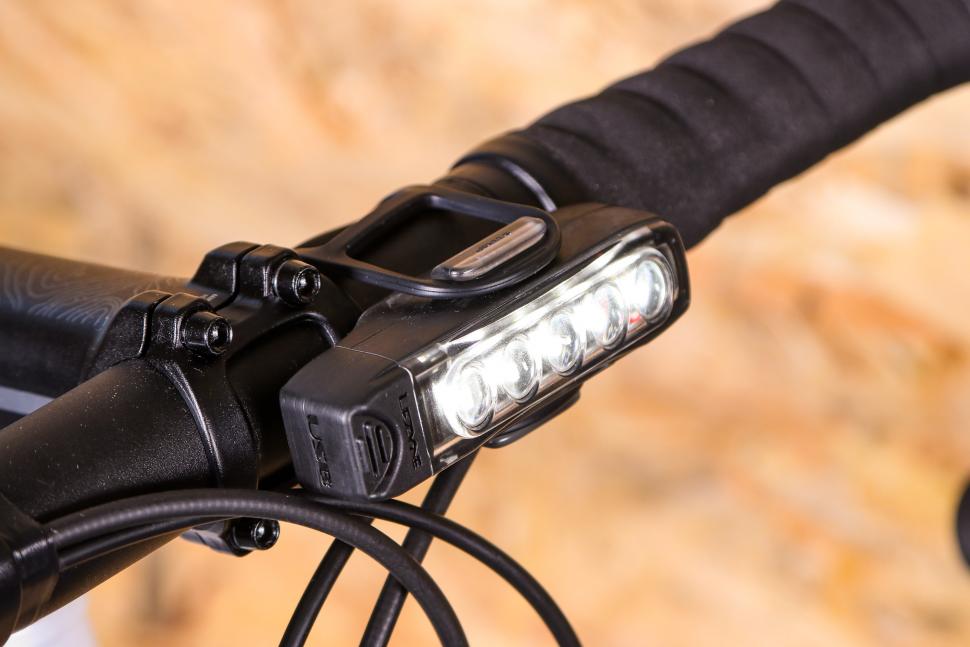

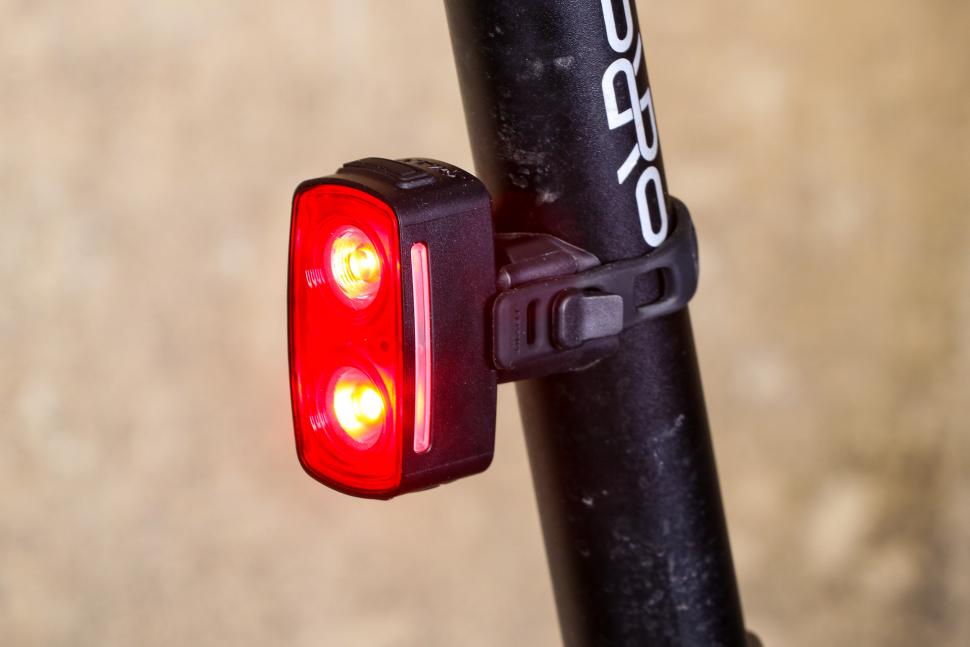

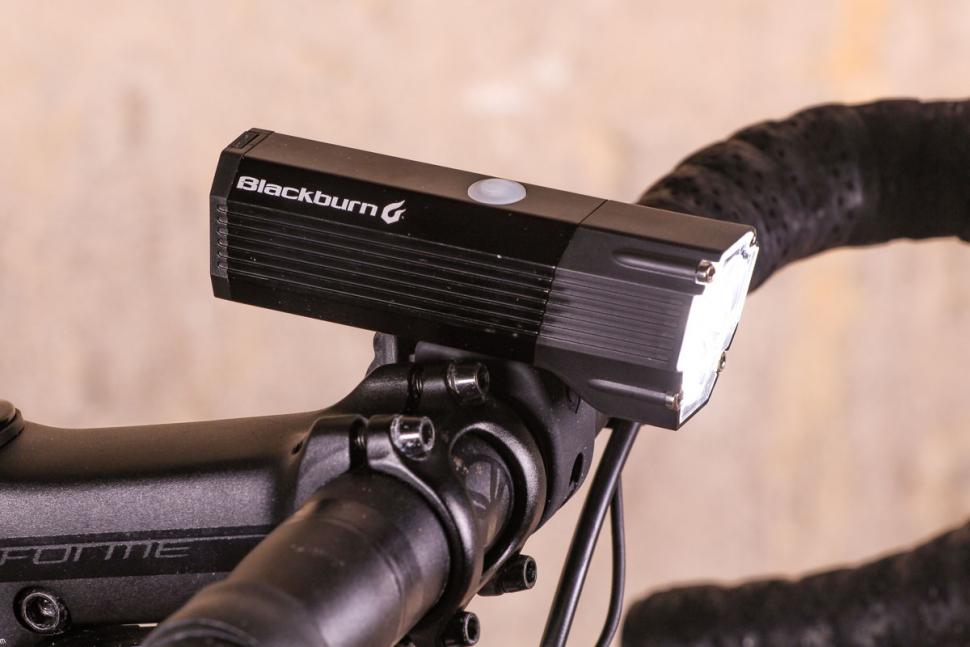
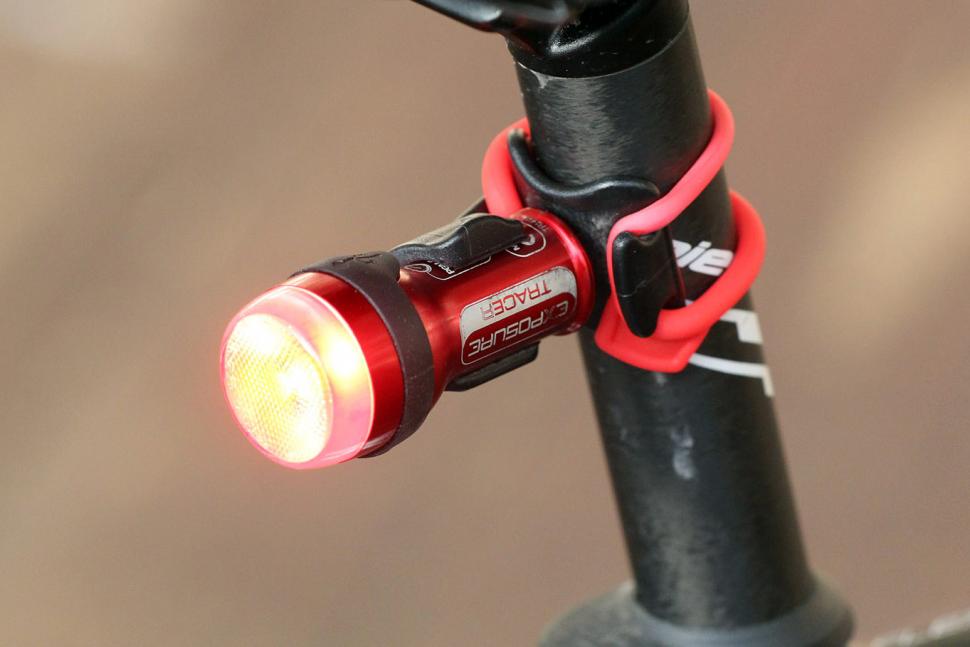

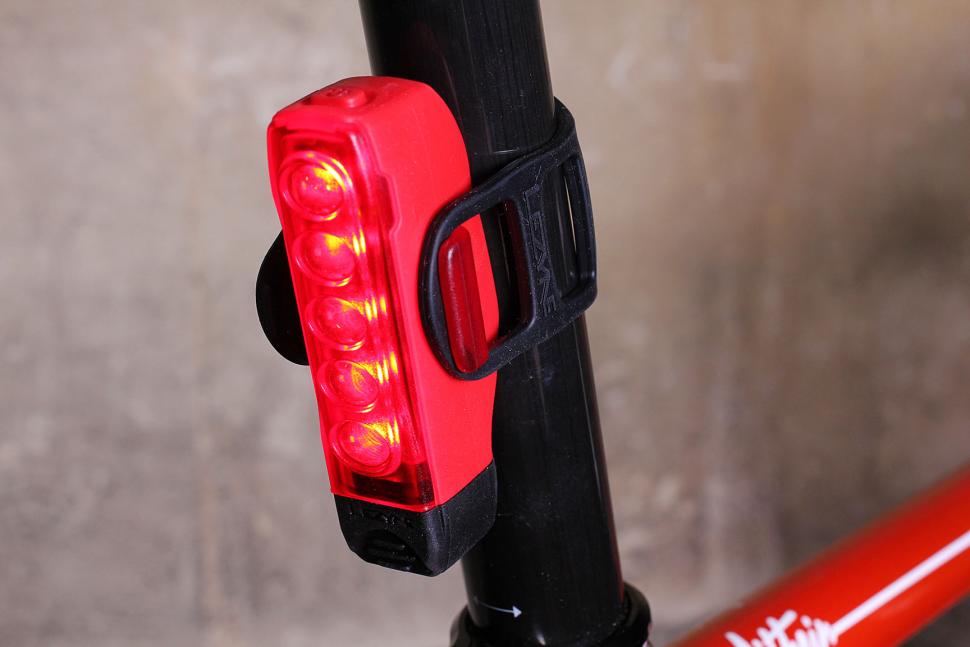
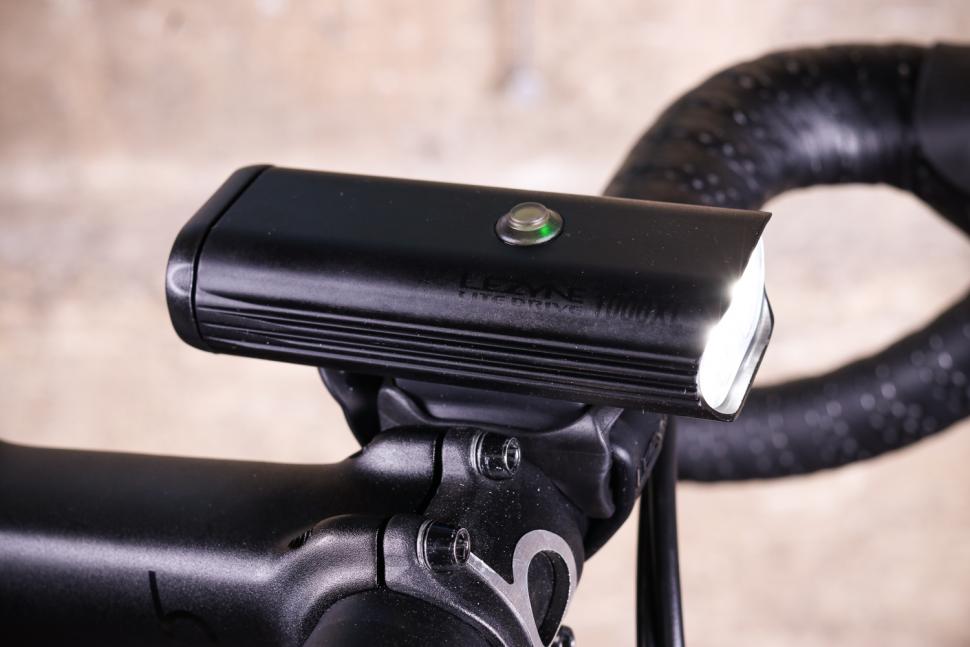
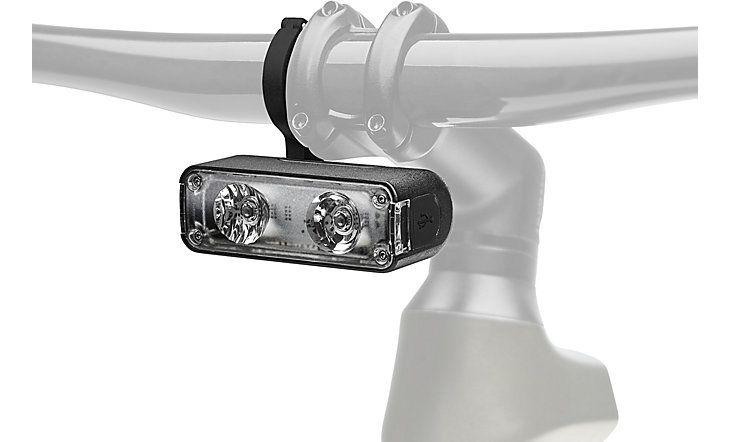
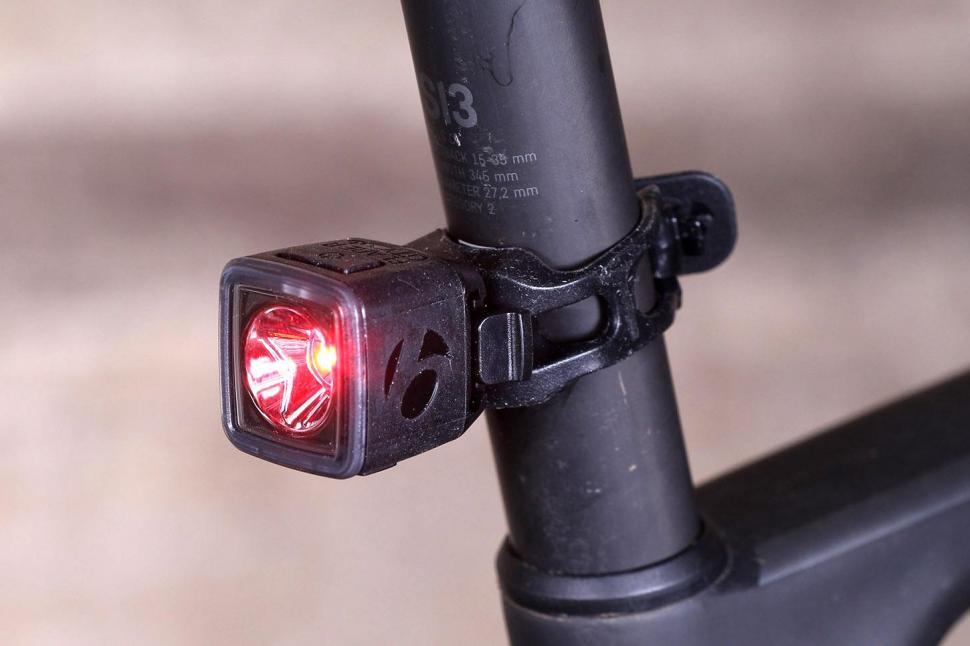
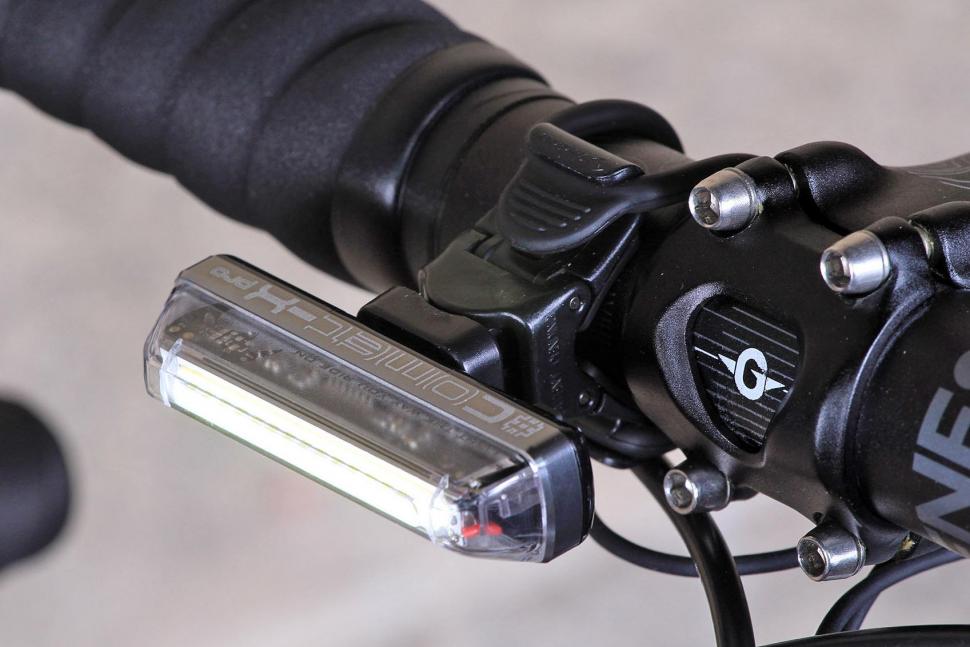
Add new comment
122 comments
I think daytime lights are a good thing. I tend to run my rear light on all the time. The front one less often. Perhaps I ought to run the front one on too.
As an aside, it's hard to credibly question spurious polls (as some recent articles have) and then report the results of a twitter poll as offering any insight beyond: people seem interested, we ought to investigate this properly.
Agreed, I won't go out without a GOOD rear light (normally see.sense). I've recently picked up a Knog Mini Chippy on the front as well.
No daytime running lights.
Other obstacles that drivers must avoid are not equipped with lights, why should bikes be any different? We need to put lights on pedestrians, traffic furniture, animals, trees, trash bins, etc. if we are going to go this route.
I feel that once again this puts all the burden on cyclists, and none on drivers, who need to pay attention.
Or perhaps I shouls just accept that drivers are NEVER going to pay attention, and get lights.
What to do?
So we've got helmets, we've got hi-viz, and now we're moving towards a situation where largely redundant, irritating, expensive lights with unproven safety benefits are becoming a "must-have" accessory. If I was to set out to deliberately pare cycling back to a hard core of well-to-do middle-aged, overwhelmingly male enthusiasts, I couldn't think of a better way to do it.
I understand the sentiment, but Volvo's run permanently with their sidelights on. I always drive with the sidelights on in my car (which I actively have to do because it's not a Volvo).
I guess it's down to where you draw the line between principle (we shouldn't have to do this) and personal responsibility (I think this will benefit me so I'll do it).
I'd say a maybe in the UK on the rear mainly.....in wet or low light...otherwise a huge NO.... in the EU.... you have no need to... the drivers are not self entitled in my experience
Personally I have always ridden with a rear light on and in certain places/scenarios with my front light also but that is my personal choice. It also hasn't stopped all of the fucktards close passing, left turning across me, right turning across me or any other chopper type activity but hopefully it has lessened it. Making it law I'm certainly not in favour of as it smacks of victim blaming again or a technicality for the odious insurance companies to wriggle out of paying out.
Very much depends on riding conditions, but a good hi-viz would seem a better bet in my experience.
Obviously if you don't like riding in hi-viz (saw a really effective pink gilet or jersey in the Lakes yesterday) then lights are a good option. But only decent ones, set up right.
I made up a runaround bike for the lady of the house from a frame i was given,i bought some wheels from Germany with a dynamo hub and B&M lights with the senso setting,She leaves them on all the time
and i've got to say mainly from looking over my shoulder to see where she is,They are certainly attention grabbing from quite a distance.(i don't mean that to sound harsh but she doesn't cycle that much).
I use them but even with a bright top and bright lights motorists don't see me. They just aren't looking.
For the ones that do then I'm sure lights make me stand out better. In an ideal world we wouldn't need them but it's not an ideal world. I'm not going to put my life at extra risk by not using lights just to prove a point.
My dyno lights have a daylight mode. Since riding with them (early September) I've had two right-turning SMIDSYs.
There is undoubtedly an arms race out there, some of the latest generation car lights are painfully bright - I think in part its that they're a very cold blue. As a driver I find them quite dazzling and at twilight I think there's a risk that you won't be spotted on a bike if you're not running lights.
The whole debate is moot for me as my dyno lights are always on and half my commute is on unlit roads so I have to have good lights.
I own a bike with a dynamo and lights that are always on and the most infuriating thing is the number of people - pedestrians and even other road users - who feel I ought to be told that my lights are on... thats closely followed by the even more annoying gits who need to tell me that I left my bicycle lights on and, when I tell them, don't worry they will go off all by themselves in 2 to 3 minutes they act like I am talking about some strange alien technology... whoever heard of lights that go off by themselves... whoever heard of making your own electricity by pedeling... burn the witch :.)
I have lights on front and rear, in the day and dark. It makes me more visible. I also use pedal reflectors. My choice. Happy cycling all !
Volvos run with side lights on because they are designed and built in Scandinavia, where they have much less daylight than here.
Since acquiring a tiny Cateye rear light and Lezyne front light, I have started to carry them for bits where there is lots of tree cover and hence shade, or long tunnels, or I get back later than intended, but I don't have them on all the time.
One of the first lessons I learnt as a motorcyclist was to make yourself visible through road positioning and use of lights. It is self preservation pure and simple and I use similar principles as s cyclist.
Evidence it works?
Answer to the Q, NO, NO, Thrice NO.
Slippery slope that we've already seen with other BS 'safety' features.
Putting the onus on the vulnerable DOES NOT WORK ... EVER!
Has anyone else noticed how many cars have ONLY their daytime running lights in at night? Obviously seeing lights out front fools the driver into thinking they have all their lights on when the reality is the rear lights aren’t on and the cars are unlit from behind? An unfortunate example of ‘enhanced’ safety proving to be anything but. My own thoughts are that the more automated you make any process, (sat nav, automatic gears, automatic lights) the less the driver is engaged. The side effect is they stop thinking for themselves and end up concentrating on other things ........like their phones.
I just people would turn them on steady mode in a group ride
I use a rear light on most rides in winter particualry in low light conditions.
Only use a front light at night or in darkness.
I run three rear lights - one each seatstay and one on my seatpost. In the day, I run the seatstay ones in flashing mode and the seatpost one in random mode. At night, I turn the seatstay ones in steady mode so drivers can judge my distance better.
Up front, I use a Cat Eye Volt 1200. In the day it's either in HyperConstant (pulsing flash) or in full flash mode. At night it's usually at the half-power 600 lumen mode.
I live in a country where pretty much nobody watches out for cyclists, much less those that can keep pace with city traffic, so most times I feel I have to be really un-subtle about being seen.
I am firmly in the no camp for this one.
Do you know what, on certain winter or particularly miserable days, yes, stick your lights on, makes total sense. However this call for permanent day lights is bullshit.
Note that its the manufacturers that are calling the loudest for this, manufacturers who also happen to sell lights.
Go back thirty years and see who were the loudest advoctes of cycling helmets... yep it was the likes of Bell, manufacturers of motorcycling helmets looking to diversify markets.
Its a slippery slope. We'll all toe the marketers line, fit our bikes with lights until it becomes law, and shortly afterwards, anyone riding without effective lights will be seen as fair game for our ever more aggressive, self-entitled motoring friends.
Rather than pandering to this marketing bullshit, why not put effort into pushing for greater safety on our roads where it counts, and that is changing driver behaviour / mindsets. Its the only thing that can make us 'safer'.
That said, we are already perfectly safe. Perfectly. I'd imagine that nearly all fatal cycling accidents are covered by this website... our perception of risk is totally out of whack.
Should no, but do I yes.
its more for the low sun/grey days etc, and I have some blinkies on the commute bike, the road bike is a CX so rather less of a issue!
The problem is that in addition to the always-on DRLs many dashboards are now permanently lit (usually because they're entirely digital). Takes away a valuable visual clue as to when you should be turning your lights on - if its dark enough inside the car that I can't see my analogue clocks my lights go on.
There's a related issue of DRLs washing out turn indicators. I know they're rarely used anyway on Audis but recent models have the orange indicator LEDs sandwiched between two rows of white DRLs (because styling) which makes them difficult to spot. Some manufacturers (Volvo definitely) have countered this by disabling the DRL temporarily whilst the turn indicator is flashing.
Both fine examples of unintended consequences.
Not a fan of daytime lights for cyclists, as a cyclist I find them annoying, especially front lights. Certainly overkill on a bright day. On a dull day, or when starting early or finishing late, then yes of course.
As an aside, this conversation has already happened in the time-triallng world. TTing is of course done (mostly) in the daytime. Many testers are vocal about the desirability of a really bright rear light, Scorpion or similar, others less keen, but visit any TT and 90% of testers will have a rear light even though they are not mandated by the governing body.
Disagree. Many times in bright sunshine on open roads, moorland etc you can then drop into heavily wooded areas and it's the change from light to dark or going through dappled light where riders can be very difficult to spot, even hi-vis doesn't work. Lights cut through all of that.
I've worked on numerous long-distance charity events and we always point out to riders that although they may be starting in bright sunshine, they're travelling 100 miles point to point and the weather when they are arriving at point B in 7hrs time may be very different to the weather as they leave point A.
I'm in the always-on camp, a mate commented just yesterday about how good my Exposure TraceR is on Daybright mode (which has a built-in brake light as well, it's very cool - works off an accelerometer.)
Most TT events mandate them now even if CTT doesn't.
Most events advise their use, only South DC as far as I'm aware tries to mandate them and this is controversial, technically they are not able to overrule CTT.
Surely the article refers to a paper that provides exactly that evidence?
I think they are a good idea given the gadget induced distracted nature of drivers, at least here in the States.
I run front and rear in flash mode on both my commuter setups which might take me into situations that demand more visability (higher traffic pattern, etc.) That said I don't run any lights on my road bikes.
Have used Bontrager for last couple of years with great success. ION 350 R in front and Flare R in rear. Midday visability is impressive.
Michael Mason (RIP) had both a flashing red rear light and a reflector and was noticed by many witnesses. But apparently the driver Gail Purcell was unable to see him... "there are none so blind as those who will not see".
There is a safety-scare coupled with unproven-yet-costly-remedies marketing move afoot in bicycling circles for quite some time. It started with freds wearing helmets and is now extending into the foolishness of daytime running lights, head-mounted lazer lights and other gimmicks. Wear and carry them if you want, but there is a distinct absence of evidence that they are going to do anything except empty your wallet.
So many people saw the guy. That's good. If Gail Purcell had been paying attention she should have seen him too.
Just because there are really awful drivers out there doesn't mean that lights don't work. If you're not paying attention you won't see any thing.
Pages